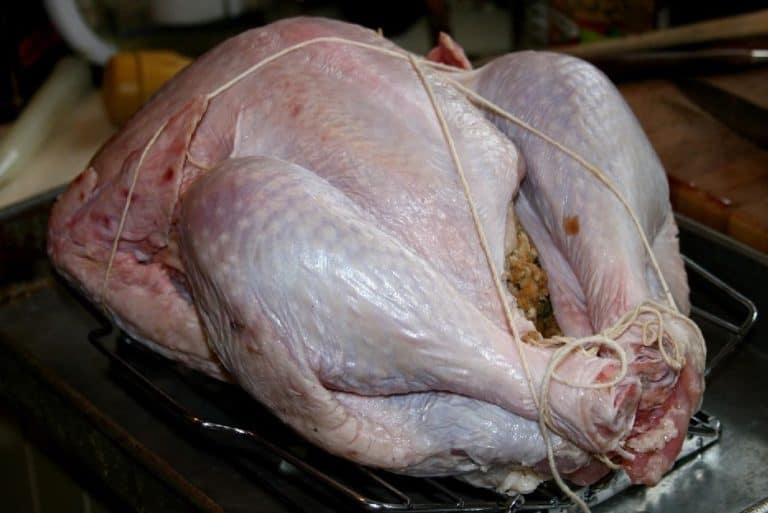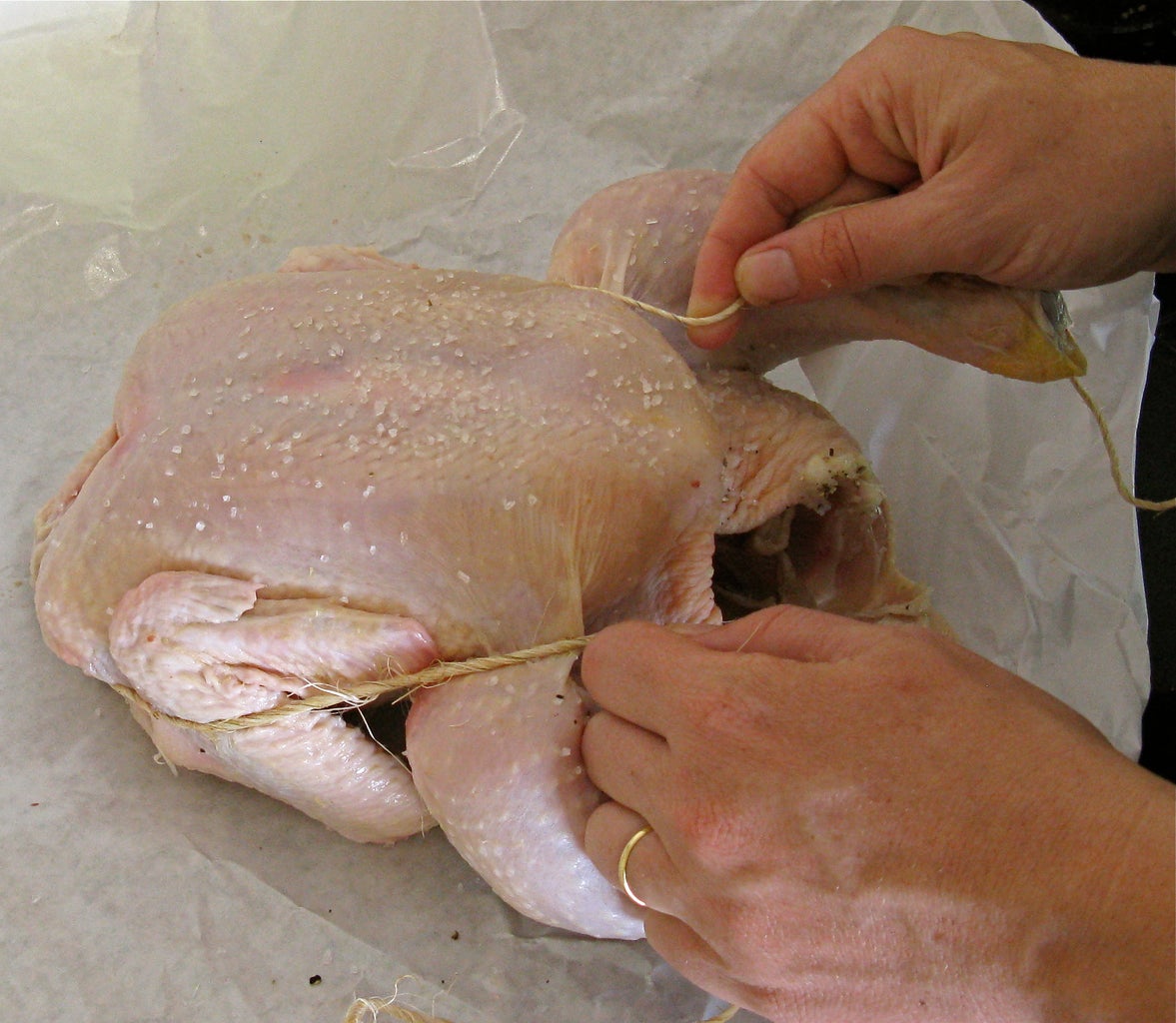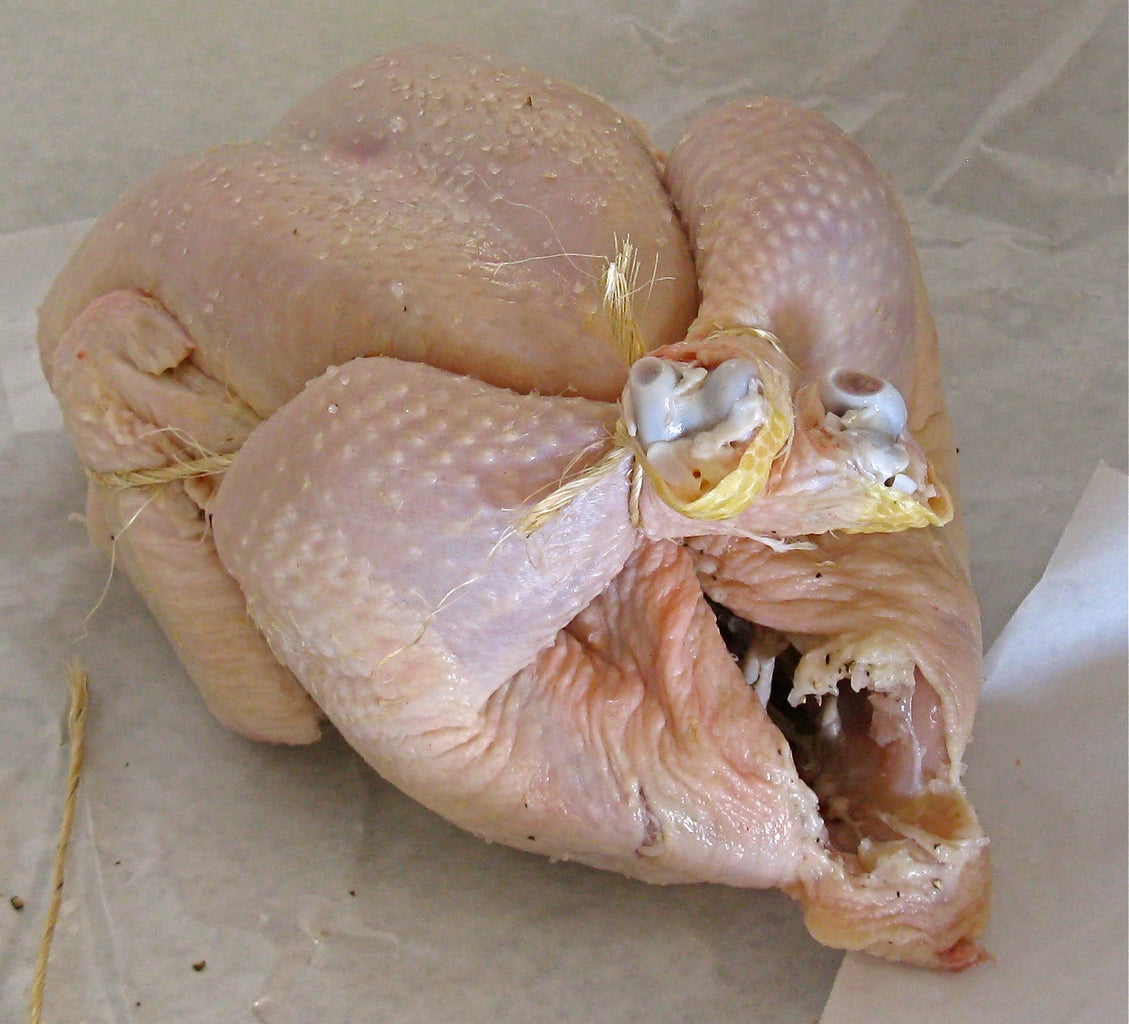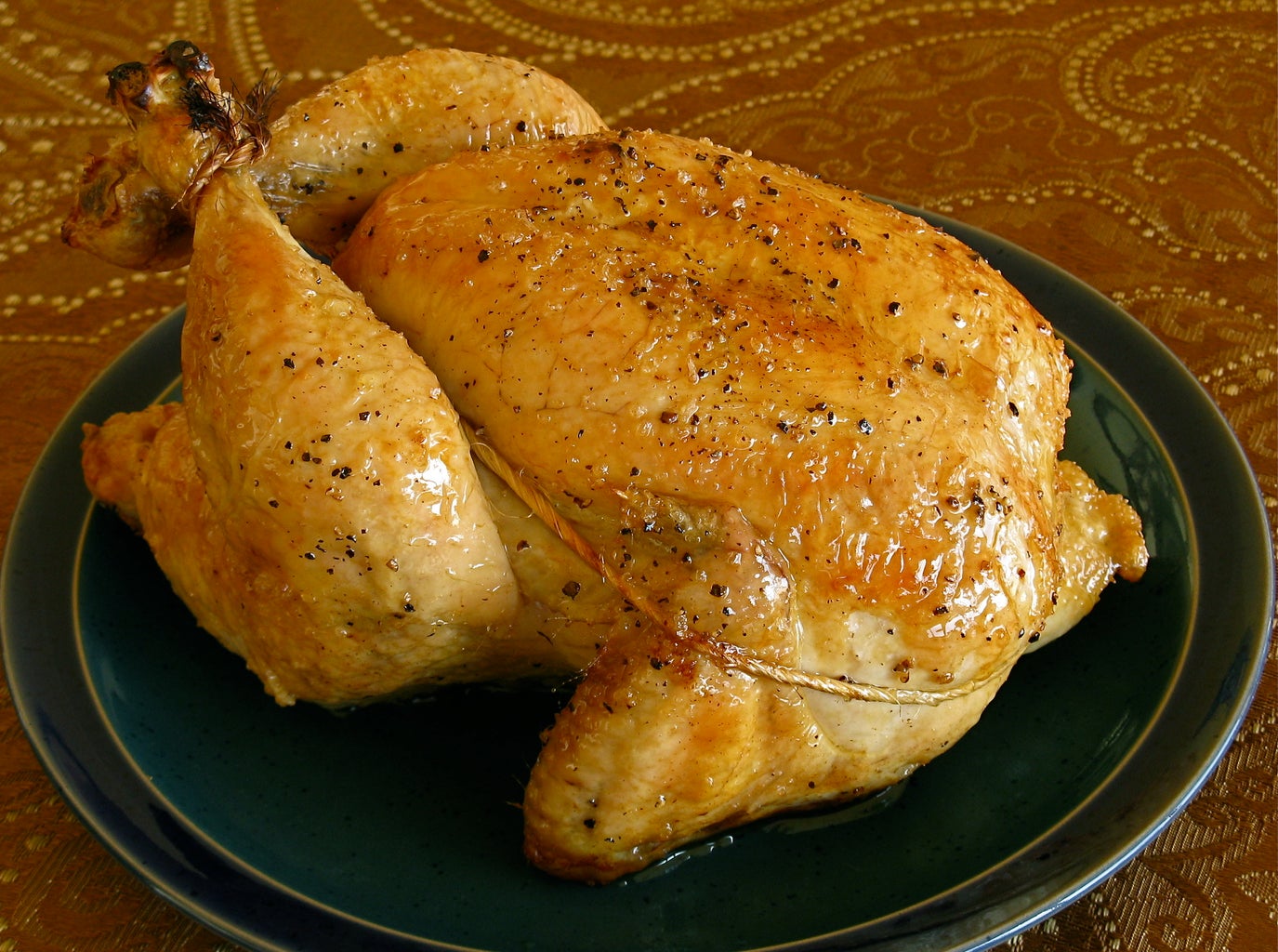Trussing a chicken before roasting may seem like an unnecessary extra step, but there are some good reasons to take the time to tie up those legs. Here’s a look at the benefits of trussing and how to easily truss a chicken without any special tools.
What Does Trussing a Chicken Do?
Trussing a chicken simply means tying the legs and wings close to the body using string, twine or even toothpicks. This has several effects:
-
It makes the chicken cook more evenly. Legs close to the body keep the thighs from getting too done and the breasts from getting too soft.
-
It helps the chicken keep its juices and moisture. Trussing makes the shape more compact so there is less surface area that can lose water while the chicken roasts.
-
It allows the chicken to cook faster. By putting everything together, the total amount of food that needs to be cooked down goes down.
-
It can help the chicken have a more even, appealing shape when it’s time to serve. The chicken looks better and more round now that its legs and wings are tied together.
So in short, trussing leads to a chicken that cooks faster, more evenly, stays juicier and looks nicer That’s why many chefs recommend taking the extra minute to truss poultry before roasting.
How to Truss a Chicken Without String
You don’t need kitchen string or twine to truss a chicken. For a string-free method, all you need is a sharp knife or kitchen shears.
Here are simple steps for trussing a chicken without using string:
-
Place the chicken on a cutting board, breast-side up with legs toward you.
-
Pat the chicken dry thoroughly inside and out. Tuck the wings under the body.
-
Pull any excess neck skin toward the cavity and tuck it inside.
-
Make small slits in the skin around the tail end, just big enough to fit a drumstick through.
-
Take one leg and carefully push it through the slit, being careful not to tear the skin. Repeat with the other leg.
-
You can leave the chicken as is, or flip it over and tie the ends of the drumsticks together with a small piece of twine.
And that’s all there is to it! With both drumsticks pulled through slits in the skin, your chicken is neatly trussed and ready for the oven. No special tools required.
Trussing Methods With String or Twine
While a knife or shears are all you need, you can use string or twine for a classic truss:
-
Tie the drumsticks together: Simply flip the chicken over and tie the ends of the drumsticks tightly together with a 12-15 inch piece of string.
-
Tie around the body: Wrap string around the wings and body, then knot securely. Make sure legs stay closed together.
-
Loop method: Cut 3 pieces of string, 12 inches each. Tie each piece around a drumstick, then loop the string around the tail and tie at the front.
To Truss or Not to Truss?
While trussing has its advantages, it’s not strictly necessary. For quicker weeknight roasts, you can skip trussing. The chicken may cook slightly less evenly, but will still be delicious.
Trussing is most useful for:
- Special occasions when presentation matters
- Cooking a very large chicken or turkey
- Slow roasting or smoking over indirect heat
Otherwise, an untrussed chicken will still provide a tasty weeknight dinner with fewer steps. It all comes down to your priorities for that particular meal.

Step 3: Tuck Wings

Introduction: How to Truss a Chicken


ChefSteps Tips & Tricks: Best Way To Truss A Chicken
FAQ
What happens if you don’t truss a chicken?
Trussing a chicken (or any other bird) ensures that the legs and wings are firmly fastened against the body. This helps the chicken maintain its shape and cook evenly without drying out any of the extremities.
Why is it important to truss a chicken?
Using kitchen twine to tie your chicken up so that the wings and legs stay close to the body is called trussing. Trussing your bird brown more beautifully and evenly, resulting in a flavorful, juicy roasted chicken with crispy skin.
What does trussing meat do?
The meat can spread out, or in some cases, burst, which isn’t great for a presentable dish. Chefs will also truss meat that they have stuffed to keep it together, or use trussing as a method to promote even cooking. Trussing has very similar benefits when it comes to dry-aging.
Should you untie a chicken before cooking?
When you don’t truss your chicken, the breast cavity remains wide open and too much hot air circulates inside of it, drying out the breast before the thighs and legs are properly cooked. So always truss those chickens in order to protect the breast and make the chicken a more even mass for roasting.
